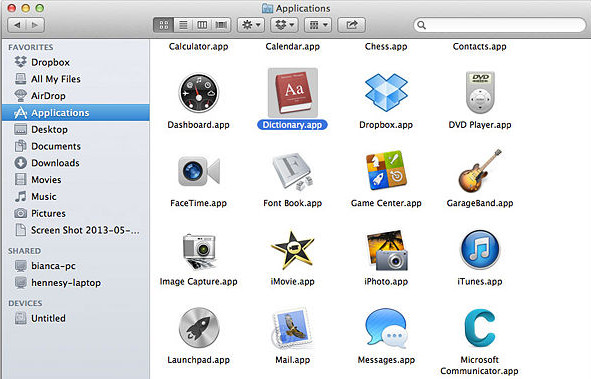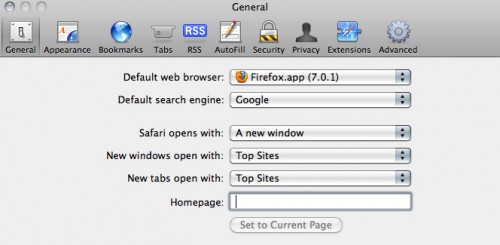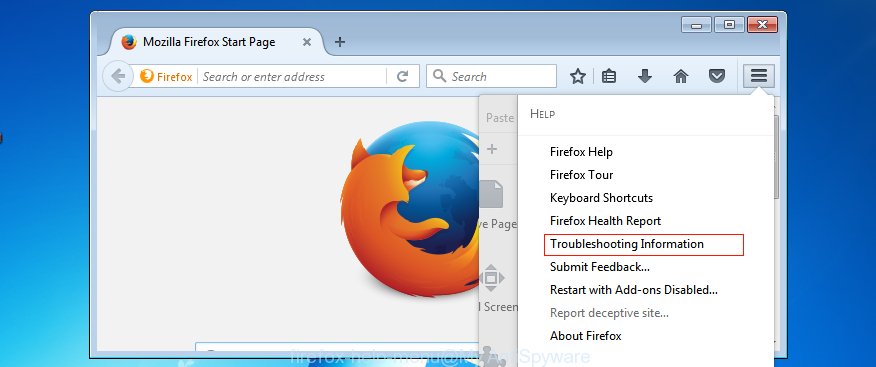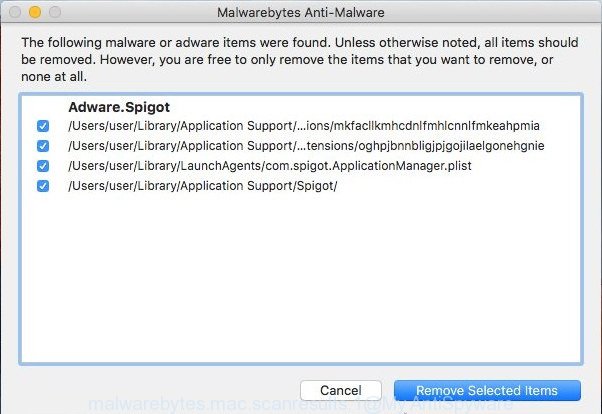VirtualDeskSearch is a PUP (potentially unwanted program) that belongs to the category of Adware. Adware is type of malware which presents unwanted ads on a MAC, redirects search requests to advertising web-pages and gathers user info for marketing purposes. Adware can display banner ads, full-screen ads, pop-ups, videos, or other varieties of online advertising. Adware software can attack your machine’s browsers such as the Safari, Mozilla Firefox and Google Chrome. Maybe you approve the idea that the ads or pop ups is just a small problem. But these unwanted ads eat Apple Mac resources and slow down your computer performance.

Unwanted ads
Does the VirtualDeskSearch adware steal your personal data? Adware software can have spyware and keyloggers built into the program, leading to greater damage to your MAC and possible invasion of your privacy data.
Adware is usually written in ways common to malicious software, spyware and browser hijackers. In order to delete adware software and thereby get rid of VirtualDeskSearch adware, you will need follow the steps below or run free adware removal utility listed below.
How does VirtualDeskSearch get on your MAC OS
Most often adware software is bundled within various free applications, as a bonus. Therefore it’s very important at the stage of installing applications downloaded from the Internet carefully review the Terms of use and the License agreement, as well as to always select the Advanced, Custom or Manual setup type. In this method, you may turn off all optional programs, which will be installed along with the desired application.
Threat Summary
| Name | VirtualDeskSearch, Virtual Desk Search 1.0 app |
| Type | adware software, PUP (potentially unwanted program), pop-up advertisements, popups, pop up virus |
| Symptoms |
|
| Removal | VirtualDeskSearch removal guide |
How to remove VirtualDeskSearch
The following step-by-step instructions will help you to remove VirtualDeskSearch ads from the Google Chrome, Safari and Firefox. Moreover, the steps below will help you to delete malware, hijacker infections, potentially unwanted programs and toolbars that your machine may be infected. Please do the guide step by step. If you need assist or have any questions, then ask for our assistance or type a comment below. Read this manual carefully, bookmark it or open this page on your smartphone, because you may need to close your browser or reboot your MAC.
To remove VirtualDeskSearch, perform the following steps:
- Manual VirtualDeskSearch adware removal
- Automatic Removal of VirtualDeskSearch adware
- How to stay safe online
- To sum up
Manual VirtualDeskSearch adware removal
This part of the article is a step-by-step guidance that will help you to remove VirtualDeskSearch adware manually. You just need to carefully complete each step. In this case, you do not need to download any additional tools.
Remove adware through the Finder
We advise that you start the MAC system cleaning process by checking the list of installed software and uninstall all unknown or suspicious apps. This is a very important step, as mentioned above, very often the malicious applications such as adware and browser hijackers may be bundled with free software. Remove the unwanted programs can delete the annoying ads or web-browser redirect.
Open Finder and click “Applications” as on the image below.

You will see a list of apps installed on your machine. We recommend to pay maximum attention to the program you installed last. Most likely, it is the VirtualDeskSearch adware software. If you’re in doubt, you can always check the program by doing a search for her name in Google, Yahoo or Bing. Once the program which you need to uninstall is found, simply right press on its name, and select “Move to Trash”.
Don’t forget, choose Finder, then “Empty Trash”.
Remove VirtualDeskSearch adware software from Google Chrome
If you have adware software problem or the Chrome is running slow, then reset Google Chrome settings can help you. In the steps below we will show you a solution to reset your Chrome settings to default values without reinstall. This will also allow to remove VirtualDeskSearch ads from your internet browser.
First launch the Google Chrome. Next, click the button in the form of three horizontal dots (![]() ).
).
It will display the Google Chrome menu. Select More Tools, then click Extensions. Carefully browse through the list of installed extensions. If the list has the extension signed with “Installed by enterprise policy” or “Installed by your administrator”, then complete the following tutorial: Remove Google Chrome extensions installed by enterprise policy.
Open the Chrome menu once again. Further, press the option named “Settings”.

The web-browser will display the settings screen. Another solution to open the Google Chrome’s settings – type chrome://settings in the web-browser adress bar and press Enter
Scroll down to the bottom of the page and click the “Advanced” link. Now scroll down until the “Reset” section is visible, like below and press the “Reset settings to their original defaults” button.

The Chrome will display the confirmation prompt as on the image below.

You need to confirm your action, press the “Reset” button. The browser will start the procedure of cleaning. When it is complete, the web-browser’s settings including search provider, newtab page and homepage back to the values that have been when the Chrome was first installed on your computer.
Delete VirtualDeskSearch from Safari
The Safari reset is great if your browser is hijacked by VirtualDeskSearch or you have unwanted add-ons or toolbars on your internet browser, which installed by an malicious software.
Run Safari internet browser. Next, select Preferences from the Safari menu.

First, click the “Security” icon. Here, choose “Block pop-up windows”. It will stop some types of pop-ups.
Now, click the “Extensions” tab. Look for suspicious extensions on left panel, choose it, then click the “Uninstall” button. Most important to delete all dubious extensions from Safari.
Once complete, check your start page and search provider settings. Click “General” tab. Make sure that the “Homepage” field contains the website you want or is empty.

Make sure that the “Search engine” setting shows your preferred search engine. In some versions of Safari, this setting is in the “Search” tab.
Get rid of VirtualDeskSearch from Mozilla Firefox by resetting web-browser settings
If your Mozilla Firefox browser is hijacked by VirtualDeskSearch or an unknown search engine displays results for your search, then it may be time to perform the browser reset. Essential information like bookmarks, browsing history, passwords, cookies, auto-fill data and personal dictionaries will not be removed.
Launch the Mozilla Firefox and press the menu button (it looks like three stacked lines) at the top right of the web-browser screen. Next, click the question-mark icon at the bottom of the drop-down menu. It will open the slide-out menu.

Select the “Troubleshooting information”. If you are unable to access the Help menu, then type “about:support” in your address bar and press Enter. It bring up the “Troubleshooting Information” page as shown in the following example.

Click the “Refresh Firefox” button at the top right of the Troubleshooting Information page. Select “Refresh Firefox” in the confirmation dialog box. The Mozilla Firefox will begin a procedure to fix your problems that caused by the VirtualDeskSearch adware. When, it is done, press the “Finish” button.
Automatic Removal of VirtualDeskSearch adware
If your Apple Mac is still infected with the VirtualDeskSearch adware, then the best solution of detection and removal is to use an anti-malware scan on the MAC OS. Download free malicious software removal tools below and start a full system scan. It will allow you get rid of all components of the adware software from hardisk and Windows registry.
Use MalwareBytes to delete VirtualDeskSearch adware
You can delete the VirtualDeskSearch adware automatically through the use of MalwareBytes Anti-Malware (MBAM). We suggest this free malware removal tool because it can easily remove hijacker, adware, PUPs and toolbars with all their components such as files, folders and registry entries.

Visit the following page to download the latest version of MalwareBytes Anti-Malware for Mac OS.
21175 downloads
Author: Malwarebytes
Category: Security tools
Update: September 10, 2020
Once downloading is done, run it and follow the prompts. Press the “Scan” button to detect the VirtualDeskSearch adware. Depending on your machine, the scan can take anywhere from a few minutes to close to an hour. During the scan MalwareBytes Anti-Malware (MBAM) will scan for threats present on your MAC system. Review the scan results and then click “Remove Selected Items” button.
The MalwareBytes Free is a free program that you can use to get rid of all detected folders, files, malicious services and so on.
How to stay safe online
Enabling an ad blocker program such as AdGuard is an effective way to alleviate the risks. Additionally, ad-blocker apps will also protect you from malicious advertisements and web pages, and, of course, block redirection chain to misleading and similar web-sites.

- Download AdGuard by clicking on the following link.
AdGuard for Mac download
3888 downloads
Author: © Adguard
Category: Security tools
Update: January 17, 2018
- After the download is complete, start the downloaded file. You will see the “Setup Wizard” program window. Follow the prompts.
- After the install is complete, click “Skip” to close the install application and use the default settings, or click “Get Started” to see an quick tutorial which will help you get to know AdGuard better.
- In most cases, the default settings are enough and you don’t need to change anything. Each time, when you run your computer, AdGuard will launch automatically and stop unwanted advertisements, block malicious and misleading web pages.
To sum up
After completing the steps outlined above, your computer should be free from the VirtualDeskSearch adware and other malicious software. The Safari, Google Chrome and Firefox will no longer display unwanted ads. Unfortunately, if the guide does not help you, then you have caught a new adware, and then the best way – ask for help here.

















